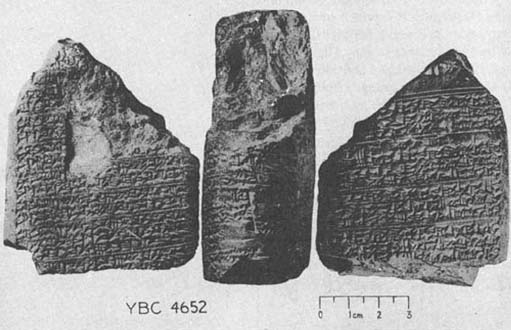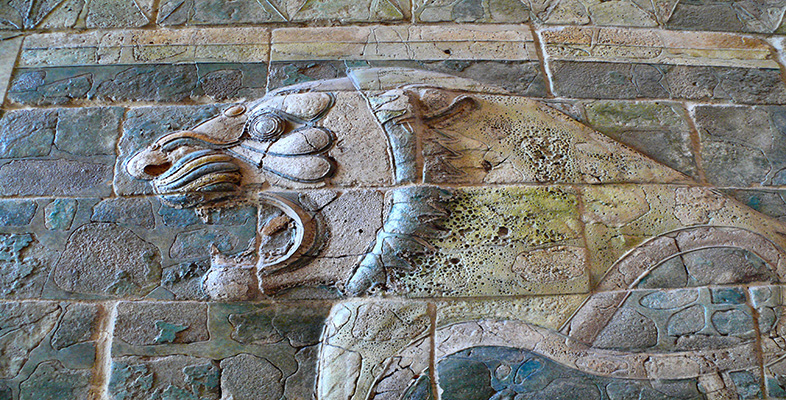1.2 A Babylonian mathematical problem
Before seeing how our knowledge has been acquired, let us get into the spirit of things by ascertaining what a problem looks like once the modern cuneiform scholar has translated a tablet. The following example is taken from a tablet (see Figure 2), now at Yale University, translated by Otto Neugebauer and Abraham Sachs. Words in square brackets are their suggested reconstructions of what the tablet presumably says (where it is damaged), and words in parentheses are the translator's additions so that the English is (relatively!) more understandable.
I found a stone, (but) did not weigh it; (after) I subtracted one-seventh, added one-eleventh, (and) subtracted one-thir[teenth], I weighed (it): 1 ma-na. What was the origin(al weight) of the stone? [The origin(al weight)] of the stone was 1 ma-na, 9½ gin, (and) 2½ se.
This tablet contained 22 such problems-and-answers, none indicating how the answer was reached, and all involving a stone of 1 ma-na when weighed.
We can make little progress without knowing how the units of weight are related (there are in fact 60 gin to 1 ma-na, and 180 se to 1 gin), but it is possible to reach some conclusions from your experience.

Question 1
Do you think this is an actual practical problem? Have you seen anything like it before? Can you suggest what the tablet might have been for?
Discussion
It is clear this is not a practical problem—he would have done better to have weighed the stone when he found it, if he were really interested directly in its weight!
You probably noticed that it was formulated in terms of unit fractions. So, on the evidence of this tablet at least, similar things seem to have been taking place mathematically in Egypt and Babylon, at much the same time.
The facts that there are so many similar problems on the tablet and that no working is shown, both suggest that it may have been for teaching purposes in an oral teaching situation where the method was explained verbally. Just what was being taught is unclear, however, as several possibilities spring to mind: it could have been the method of solving problems like this; it could have been the learning of units of weight (for the solution comes out only if these are understood correctly). It could also have been a question of how to handle these unit fractions—notice that they are all awkward ones in that they do not divide into the weights (one-seventh of a ma-na does not come out as a whole number of gin or of se).
There is one further point that we should mention, in case you tried to work out the problem but could not obtain his answer. The fractions in the question are not all parts of the original stone, but are parts of whatever the previous step has been. So it is the stone less its seventh, plus the eleventh of that, and so on. This makes for a slightly more complicated calculation than most of the otherwise similar Rhind Papyrus problems that exist from this period in Egypt.
